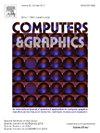深度学习在点云分类和分割中的进展:综述
IF 2.8
4区 计算机科学
Q2 COMPUTER SCIENCE, SOFTWARE ENGINEERING
引用次数: 0
摘要
点云是一种基础的三维数据表示,由于其能够表示复杂的空间结构,被广泛应用于自动驾驶和机器人等领域。随着人工智能的快速发展,利用深度学习来增强点云处理已成为计算机视觉研究的焦点。点云的非结构化性质、大规模数据量和劳动密集型注释为设计深度学习模型提出了独特的挑战。本文全面回顾了点云处理的深度学习模型的发展和最新进展,特别关注了分类和分割。我们系统地概述了解决这些挑战的技术方法和关键策略,提供了对该领域最新和著名研究的清晰理解。通过分析当前点云处理技术的优缺点,探讨了当前点云处理技术面临的挑战和未来的研究方向,从而指导点云处理技术的发展。本文章由计算机程序翻译,如有差异,请以英文原文为准。

Advancements in deep learning for point cloud classification and segmentation: A comprehensive review
Point clouds, a foundational 3D data representation, are extensively utilized in fields such as autonomous driving and robotics due to their capability to represent complex spatial structures. With the rapid advancement of artificial intelligence, leveraging deep learning to enhance point cloud processing has become a central focus in computer vision research. The unstructured nature, large-scale data volume, and labor-intensive annotation of point clouds present unique challenges for designing deep learning models. This paper provides a comprehensive review of the development and latest advancements in deep learning models for point cloud processing, with a specific focus on classification and segmentation. We systematically outline the technical approaches and key strategies for addressing these challenges, offering a clear understanding of the most recent and notable research in the field. Furthermore, we discuss the potential challenges and future research directions in point cloud processing by analyzing the respective strengths and weaknesses of prevailing techniques, thus to guide the evolution of point cloud processing technologies.
求助全文
通过发布文献求助,成功后即可免费获取论文全文。
去求助
来源期刊

Computers & Graphics-Uk
工程技术-计算机:软件工程
CiteScore
5.30
自引率
12.00%
发文量
173
审稿时长
38 days
期刊介绍:
Computers & Graphics is dedicated to disseminate information on research and applications of computer graphics (CG) techniques. The journal encourages articles on:
1. Research and applications of interactive computer graphics. We are particularly interested in novel interaction techniques and applications of CG to problem domains.
2. State-of-the-art papers on late-breaking, cutting-edge research on CG.
3. Information on innovative uses of graphics principles and technologies.
4. Tutorial papers on both teaching CG principles and innovative uses of CG in education.
 求助内容:
求助内容: 应助结果提醒方式:
应助结果提醒方式:


